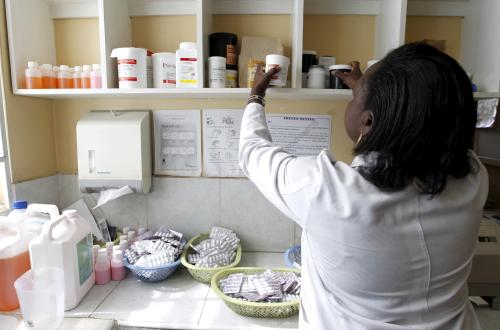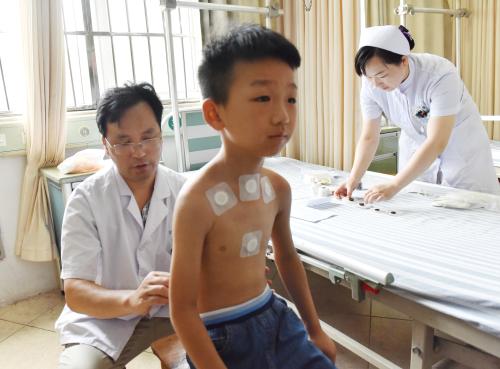China made impressive gains during the Millennium Development Goal (MDG) era. According to the Report on China’s Implementation of the Millennium Development Goals (2000-2015), China’s achievements included the following:
“The number of medical technicians and staff per thousand people rose from 3.63 people in 2000 to 5.40 people in 2014, and the number of beds per thousand in medical and health institutions increased from 2.38 in 2000 to 4.77 in 2014. … The under-five child mortality rate dropped from 61.0‰ in 1991 to 12.0‰ in 2013; the gap between urban and rural areas in child mortality rate was narrowed from 1:3.4 to 1:2.4; the maternal mortality rate dropped from 88.8 per 100,000 in 1990 to 23.2 per 100,000 in 2013; and the maternal mortality ratio between rural areas and urban areas declined from 1:2.2 to 1:1.1 times. … The prevalence of tuberculosis was 66 per 100,000 in 2010 with a mortality rate of 3.9 per 100,000, down by 51% and 79.5% respectively compared to that in 1990.”
But according to this recent article in PLOS Medicine, written by us along with collaborators in China, China’s progress toward the 2030 Sustainable Development Goals (SDGs) is unimpressive, even worrying. Without effective policy interventions; new drugs, vaccines, and other technologies; and greater public spending, China will achieve only 12 out of the 28 health-related SDG targets. Two-thirds of the provinces will not achieve even half of the 28 goals (Figure 1).
Figure 1: Progress on health-related Sustainable Development Goals in China
Source: “Current situation and progress toward the 2030 health-related Sustainable Development Goals in China: A systematic analysis,” PLOS Medicine
Our research identified five key health challenges that China must meet in order to be successful.
- Hepatitis. China has not developed a comprehensive national plan for hepatitis control, despite having the highest hepatitis burden in the world. Existing hepatitis control efforts such as HBV vaccination for children, transmission from mother to baby prevention, and some hospital-based safety measures are managed by different agencies with unstable financing. Recent research found that rates of case notification and effective treatment of hepatitis are low because of poor diagnosis, high health care costs, and stigma.
- Tuberculosis. China has the second largest number of patients with MDR-TB and the case notification rate is very low. In 2016, only 2,016 patients with MDR-TB were detected, of which only 68 percent have been put on treatment, although the situation has improved slightly in recent years. Without detection or effective treatment, ending the epidemic of MDR-TB is impossible.
- Noncommunicable diseases. There are insufficient prevention and health promotion efforts to address the risk factors for NCDs including smoking, drinking, physical inactivity, being overweight, and diet-related deficiencies. Mental health is a neglected issue in China as well. As the leading cause of death in China, NCDs will continue to be a major disease burden during the next decade.
- Out-of-pocket spending. Government spending on health has increased significantly. However, almost a third of the total health expenditures were borne by households as out-of-pocket payments. Consequently, a big part of the financial burden of health care falls on service users, particularly the poor in rural areas. Additionally, the majority of expenditures were directed to treatments while public health programs, of which many have been proved to be cost-effective in disease prevention and control, barely received 6 percent of total spending.
- Aging. The final grand challenge that China needs to tackle in the upcoming decades is the health of a rapidly aging population. In 2017, there were over 228 million people aged over 60 years in China, and this number is projected to double by 2050. These dramatic changes in population age structure will lead to a rising burden of age-related diseases, geriatric syndromes, and caregiving, which has profound implications for China’s health care system.
What can be done?
To achieve the health-related SDGs, China needs to do three things:
- China has to develop an action plan that prioritizes key policy interventions for target populations. As an emerging policy and public health priority in China, population aging calls for aligning the health system with an aging population to provide affordable and high-quality health and long-term care services to achieve healthy aging and universal health coverage. This action plan must include ways to mobilize adequate resources to tackle these challenges.
- China must take a series of concerted actions including but not limited to increased investment in public goods and services for health, addressing rural-urban and regional inequities, tackling new emerging health challenges, and ensuring that no one is left behind.
- Finally, China has to tackle several cross-cutting issues such as better regulations, effective organizational structures, and rapid human resource development in order to meet the health-related SDG targets.
China’s success in reaching the MDGs between 2000 and 2015 made the world confident that it would be equally successful between 2016 and 2030, and hit the SDG targets. Our work provides a warning that China is no longer on track to meet its health goals. Indeed, unless it acts quickly and comprehensively, it will miss more than half of health-related SDGs.










Commentary
The 5 problems China must tackle now to achieve the 2030 health SDGs
December 11, 2019